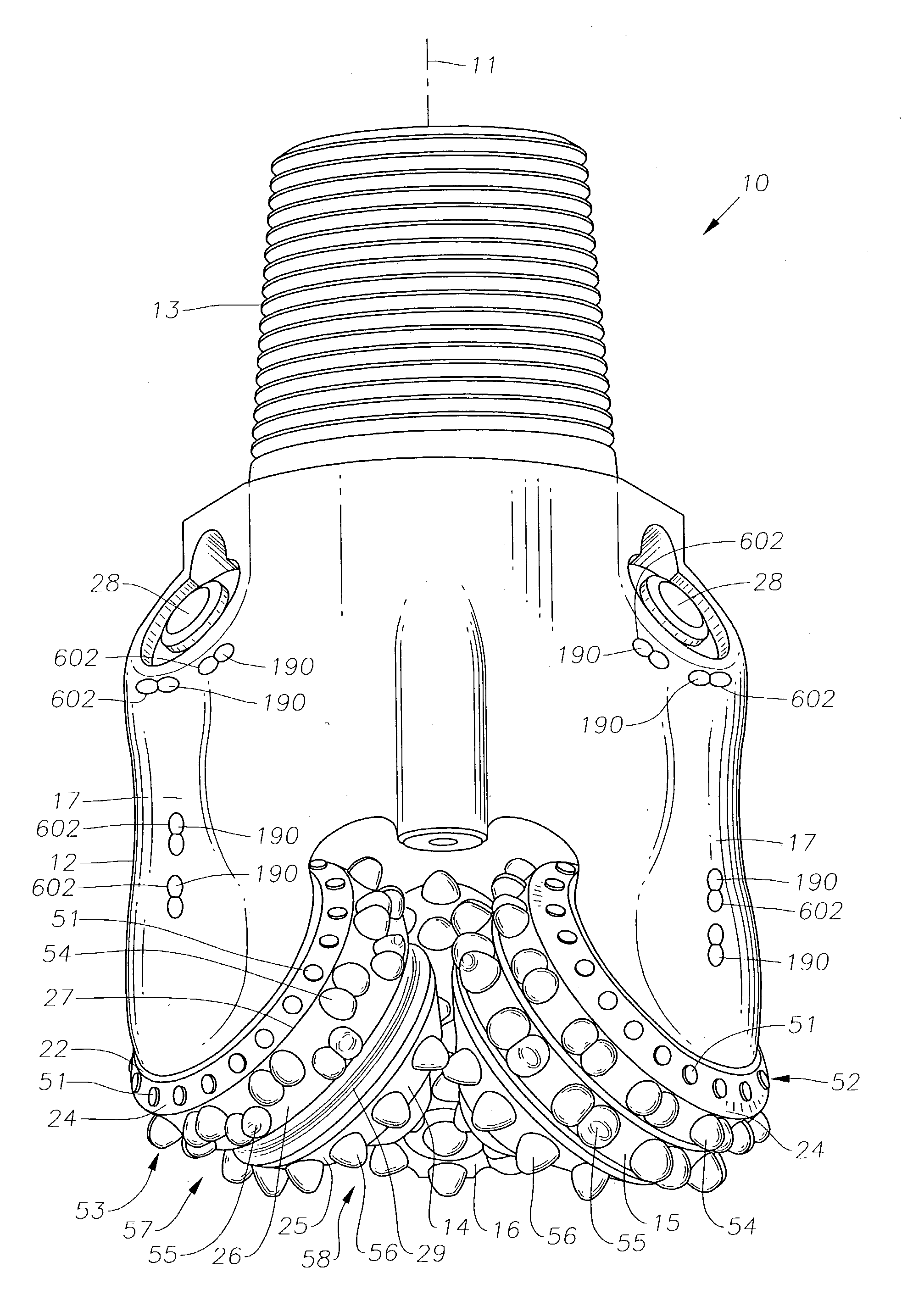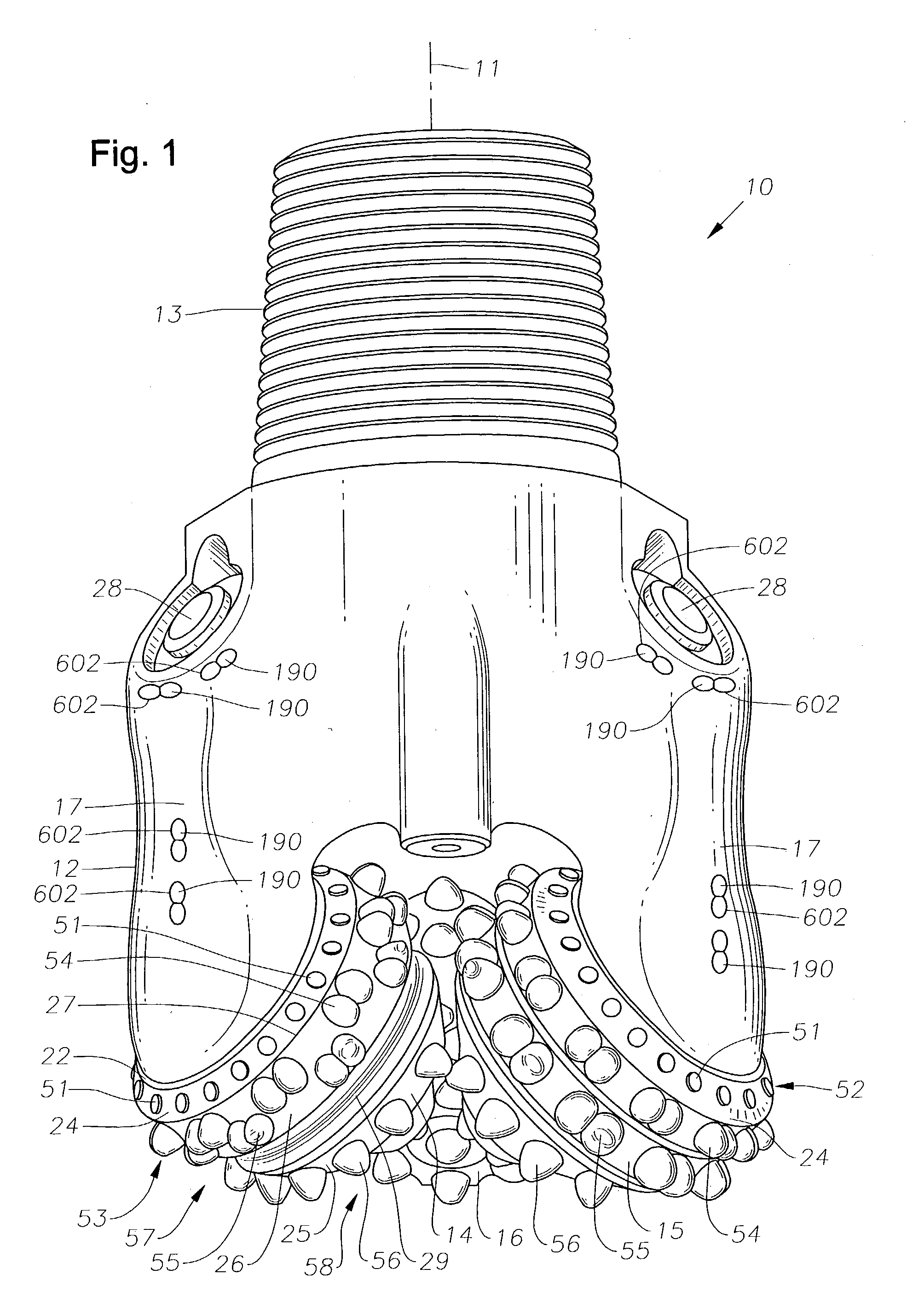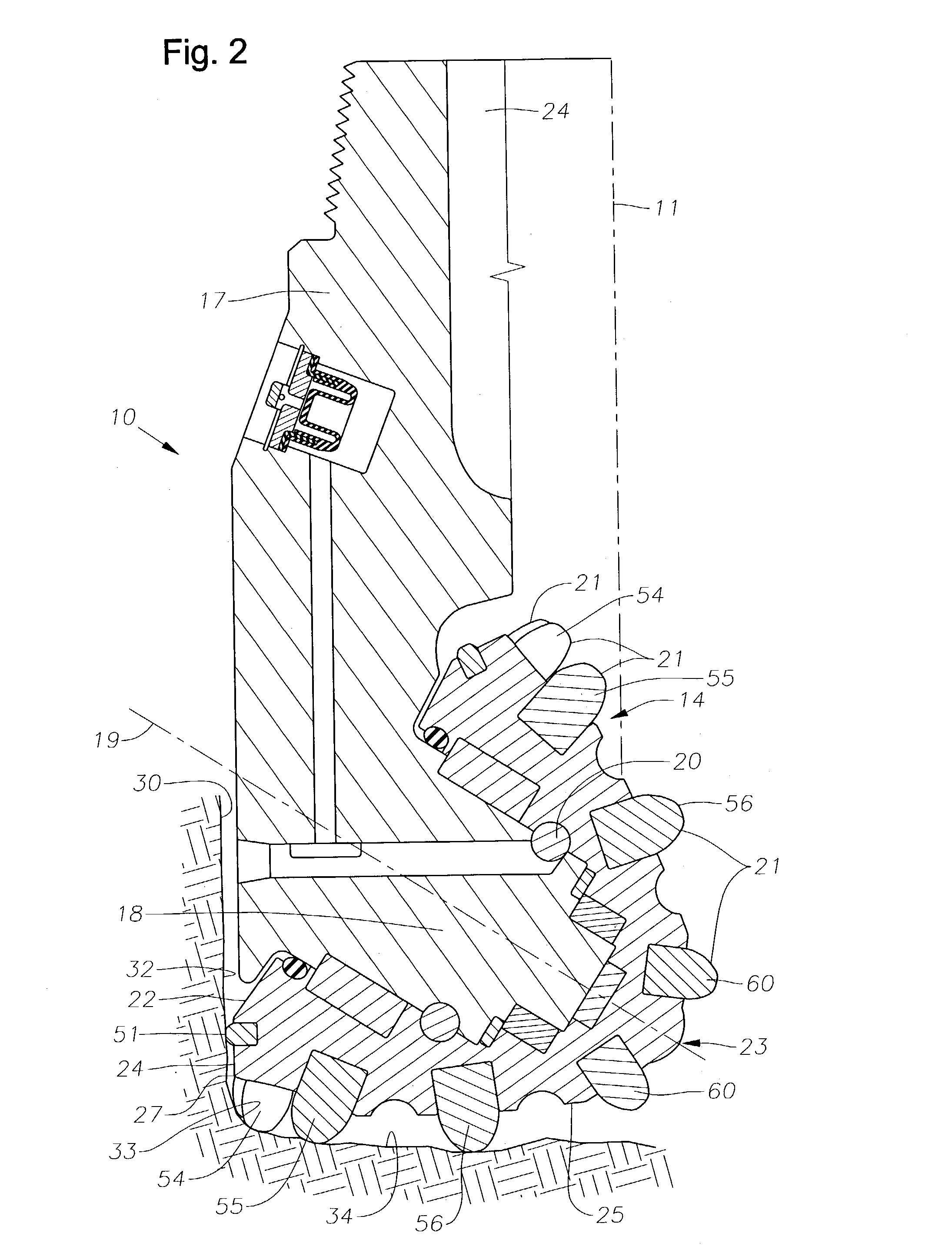Drill bit and cutter having insert clusters and method of manufacture
a technology of insert clusters and drill bits, which is applied in the field of earth-moving bits, can solve the problems of reducing the width of the cutter, affecting the shape and design of the cutter element, and requiring considerable time, effort and expense, and achieving the effect of reducing the width
- Summary
- Abstract
- Description
- Claims
- Application Information
AI Technical Summary
Benefits of technology
Problems solved by technology
Method used
Image
Examples
Embodiment Construction
[0018] Preferred embodiments are disclosed for drill bits or other drilling apparatus with enhancements in cutter element design and in manufacturing methods that provide the potential for enhancing bit ROP and increased bit life. The embodiments disclosed include a drill bit including at least one rolling cone cutter, the cutter including an aperture and a cluster of discrete cutting inserts secured together in the same aperture. The cluster of cutting inserts may include two, three, or a larger number of inserts. The inserts in a cluster may have differing sizes and shapes and may be embedded within the cone steel to differing depths and extend beyond the cone steel to differing heights. Likewise, the inserts in a cluster may be made of, or coated with, materials that differ in hardness, wear resistance and toughness, so as to particularly tailor the inserts of the cluster to optimally perform and best withstand the type of cutting duty that the insert will experience. Thus, for e...
PUM
| Property | Measurement | Unit |
|---|---|---|
| depths | aaaaa | aaaaa |
| hardness | aaaaa | aaaaa |
| angle | aaaaa | aaaaa |
Abstract
Description
Claims
Application Information
 Login to View More
Login to View More - R&D
- Intellectual Property
- Life Sciences
- Materials
- Tech Scout
- Unparalleled Data Quality
- Higher Quality Content
- 60% Fewer Hallucinations
Browse by: Latest US Patents, China's latest patents, Technical Efficacy Thesaurus, Application Domain, Technology Topic, Popular Technical Reports.
© 2025 PatSnap. All rights reserved.Legal|Privacy policy|Modern Slavery Act Transparency Statement|Sitemap|About US| Contact US: help@patsnap.com



